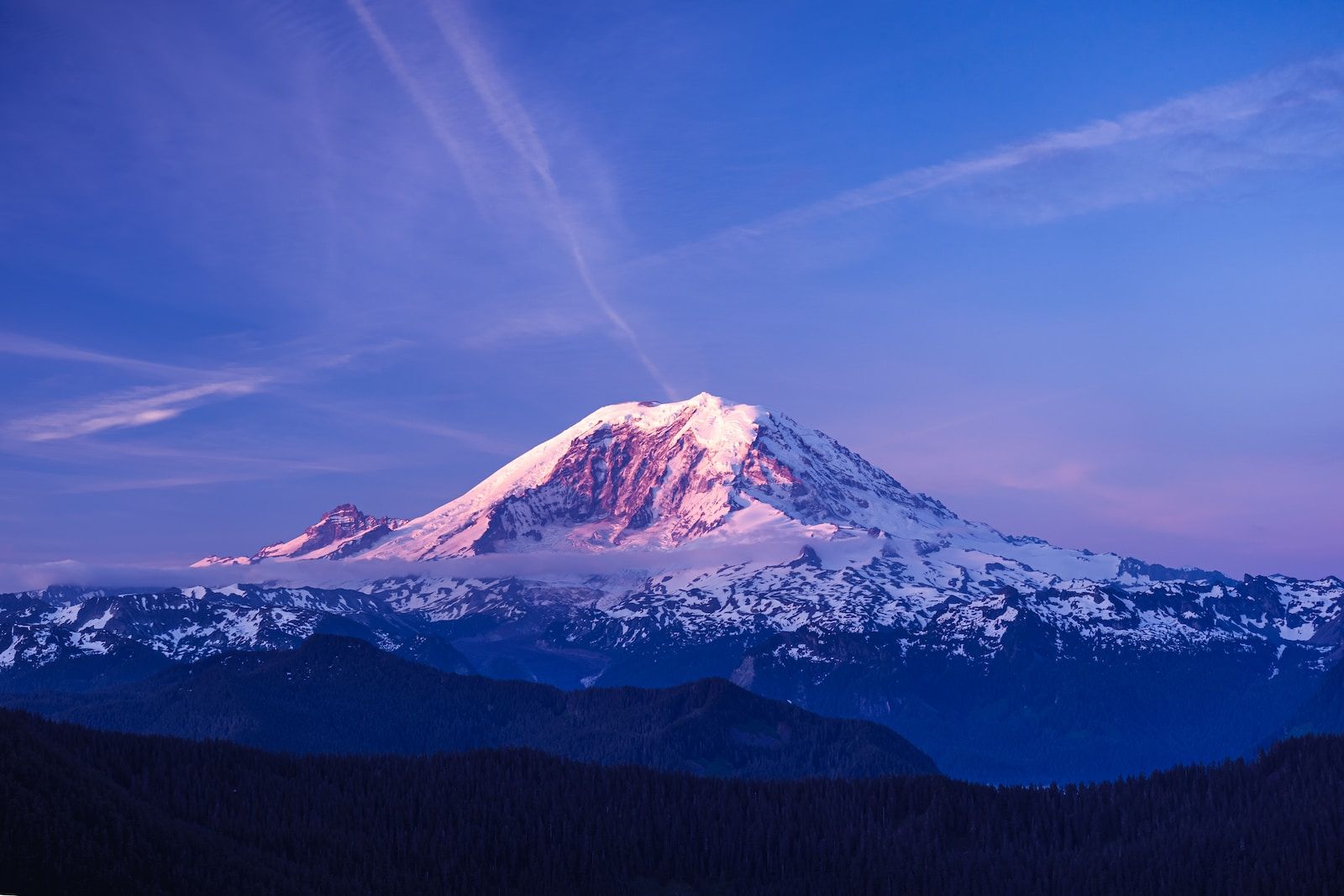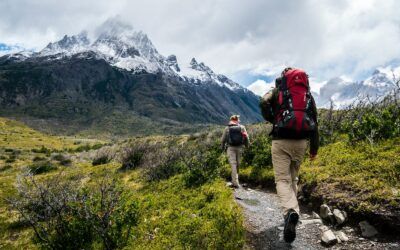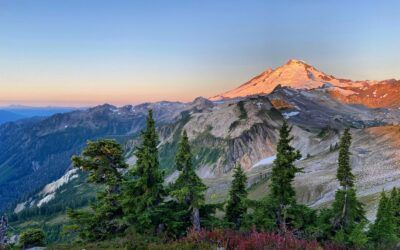National parks are treasures of natural beauty and biodiversity, offering awe-inspiring landscapes and endless adventure possibilities. As passionate adventure enthusiasts, it becomes our duty not only to experience these unspoiled habitats firsthand but also to actively engage in conserving and safeguarding them for the prosperity of generations to come. Within this all-encompassing guide, I will deeply explore the significance of dedicated conservation efforts for our national parks. Moreover, I’ll furnish indispensable advice and perspectives to ensure that our explorations are not only secure but also sustainable. So, gather your hiking backpack, fasten your hiking boots, and join me on this expedition of discovery and unwavering conservation efforts!
The Fragile Beauty of National Parks
National parks, like the majestic Mt. Rainier National Park, are home to delicate ecosystems that are easily disrupted by human activity. The recent incident at Mt. Rainier, where hundreds of visitors disregarded park guidelines and trampled the alpine meadows during a meteor shower, serves as a stark reminder of the fragility of these natural wonders. The alpine meadows, with their vibrant wildflowers, serve as crucial habitats for pollinators and other animals. Off-trail travel and trampling can cause irreparable damage, taking decades for the landscape to recover. As adventure enthusiasts, it is our duty to approach these environments with respect and mindfulness.
Responsible Adventure: Staying on the Trail

When venturing into national parks, it is essential to adhere to the guidelines set by park authorities. Staying on designated hiking trails is not only a matter of safety but also a crucial step in preserving the delicate balance of nature. Trails are carefully planned to minimize environmental impact and ensure the safety of visitors. By sticking to the trail, you can enjoy the beauty of the park while minimizing your ecological footprint. Remember, each step off the trail can have lasting consequences, so be mindful of your impact.
The Impact of Off-Trail Travel
Off-trail travel can have severe consequences for the fragile ecosystems within national parks. The vegetation and wildlife in these areas have evolved to thrive in specific conditions, and any disturbance can disrupt their delicate balance. Trampling plants can hinder their growth and prevent them from producing seeds, impacting the overall biodiversity of the park. Additionally, off-trail travel can lead to soil erosion, which can further degrade the landscape. By staying on designated trails, you can help preserve the natural beauty of these environments for future generations.
The Role of National Park Authorities
National park authorities play a crucial role in protecting and managing these natural treasures. They are responsible for setting guidelines, enforcing regulations, and educating visitors about the importance of conservation. In the case of Mt. Rainier National Park, the incident during the meteor shower highlighted some challenges faced by park rangers. Limited resources and a large influx of visitors made it difficult to manage the situation effectively. However, it’s important to acknowledge that these incidents are rare and that the majority of visitors respect and follow the guidelines set by park authorities.
Assessing the Damage
After incidents like the one at Mt. Rainier, park authorities assess the damage caused by off-trail travel and other disruptive activities. The impact on the alpine meadows, in particular, is carefully evaluated. Alpine wildflowers have a short growing season, and any damage to their roots, leaves, or flowers can have long-lasting effects on their ability to regrow. Park authorities also consider the impact on pollinators and other animals that rely on these meadows for food and shelter. The assessment process helps guide future conservation efforts and reinforces the importance of responsible adventure.
The Adventure Enthusiast’s Guide to Conservation
As adventure enthusiasts, we have the power to make a positive impact on our national parks. By following a few simple principles, we can ensure that our adventures are both thrilling and sustainable. Let’s explore some essential tips for practicing responsible adventure and conservation.
1. Educate Yourself
Before embarking on any adventure, take the time to educate yourself about the specific guidelines and regulations of the national park you plan to visit. Familiarize yourself with trail maps, safety precautions, and any restrictions that may be in place. By understanding the rules and regulations, you can make informed decisions and contribute to the preservation of the park.
2. Leave No Trace
The Leave No Trace principles are fundamental guidelines for outdoor enthusiasts. They emphasize minimizing our impact on the environment and leaving natural spaces as we found them. These principles include packing out all trash, disposing of waste properly, respecting wildlife and vegetation, and leaving natural and cultural artifacts untouched. By practicing Leave No Trace, we can protect the integrity of our national parks and ensure their beauty endures.
3. Hike on Designated Trails
We’ve already touched on the importance of staying on designated trails, but it bears repeating. Trails are carefully planned to minimize environmental impact and ensure visitor safety. By sticking to these trails, you not only protect sensitive ecosystems but also reduce the risk of accidents and injuries. Remember, the path less traveled may seem enticing, but it comes at a cost to the environment.
4. Respect Wildlife
Encountering wildlife is one of the most thrilling aspects of exploring national parks. However, it’s crucial to remember that we are visitors in their homes. Keep a safe distance from wildlife and observe them from afar. Do not attempt to feed or touch them, as this can disrupt their natural behavior and endanger both you and the animal. By respecting wildlife, we can foster a harmonious coexistence between humans and the natural world.
5. Minimize Noise Pollution
National parks offer a sanctuary from the noise and chaos of everyday life. When visiting these tranquil environments, strive to minimize noise pollution. Keep conversations at a respectful volume, turn off electronic devices, and avoid unnecessary disruptions. By embracing the silence, you allow yourself and others to fully immerse in the serenity of the park.
6. Pack Out What You Pack In

One of the essential principles of Leave No Trace is packing out all trash. This includes food wrappers, water bottles, and any other waste you generate during your adventure. National parks are not equipped with extensive waste management systems, and leaving trash behind not only detracts from the beauty of the park but also poses a threat to wildlife. Take responsibility for your waste and leave the park as pristine as you found it.
7. Support Conservation Efforts
Many national parks have dedicated organizations and initiatives working tirelessly to protect and preserve these natural wonders. Consider supporting these efforts through donations, volunteering, or participating in organized clean-up events. By contributing to conservation efforts, you become an active participant in the preservation of our national parks.
8. Share Your Experiences Responsibly
In the age of social media, it’s tempting to share every breathtaking moment of our adventures online. However, it’s crucial to do so responsibly. Avoid geotagging specific locations, as this can lead to overcrowding and increased environmental impact. Instead, focus on sharing the beauty and importance of national parks as a whole. Encourage others to practice responsible adventure and inspire them to protect these precious landscapes.
Our national parks are treasures that offer endless opportunities for adventure and discovery. By approaching these environments with respect, responsibility, and a commitment to conservation, we can ensure that future generations can also experience their wonder. As adventure enthusiasts, it is our duty to protect and preserve these natural wonders. So let’s explore, educate, and advocate for the well-being of our national parks. Together, we can make a difference and create a sustainable future for adventure and conservation.





0 Comments